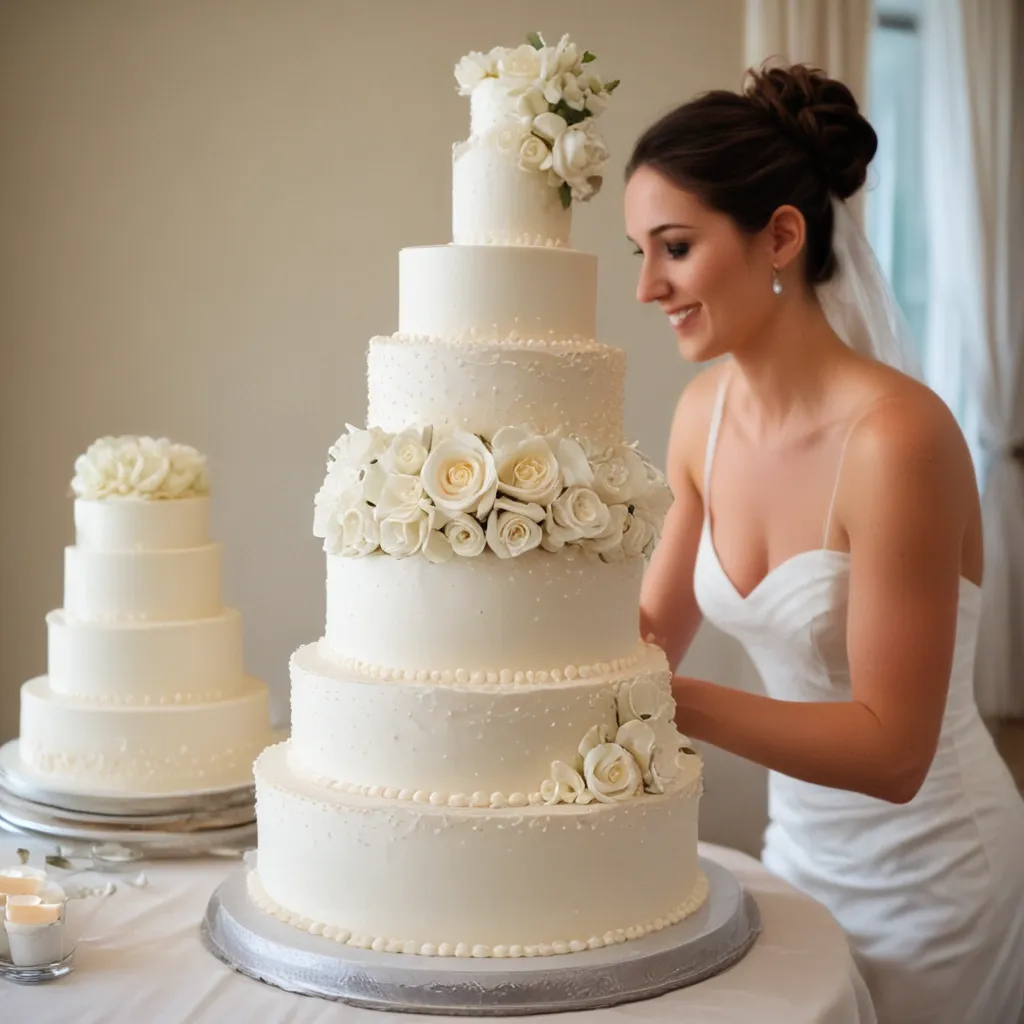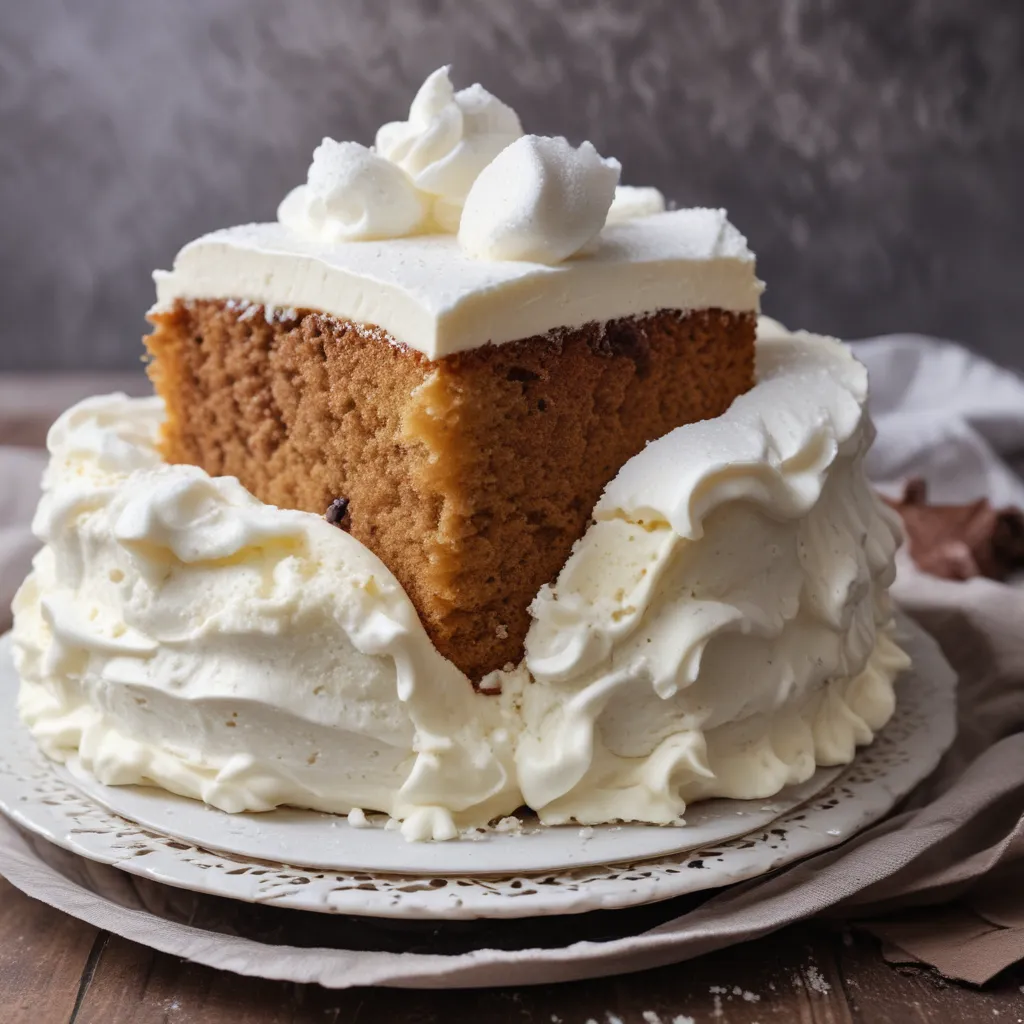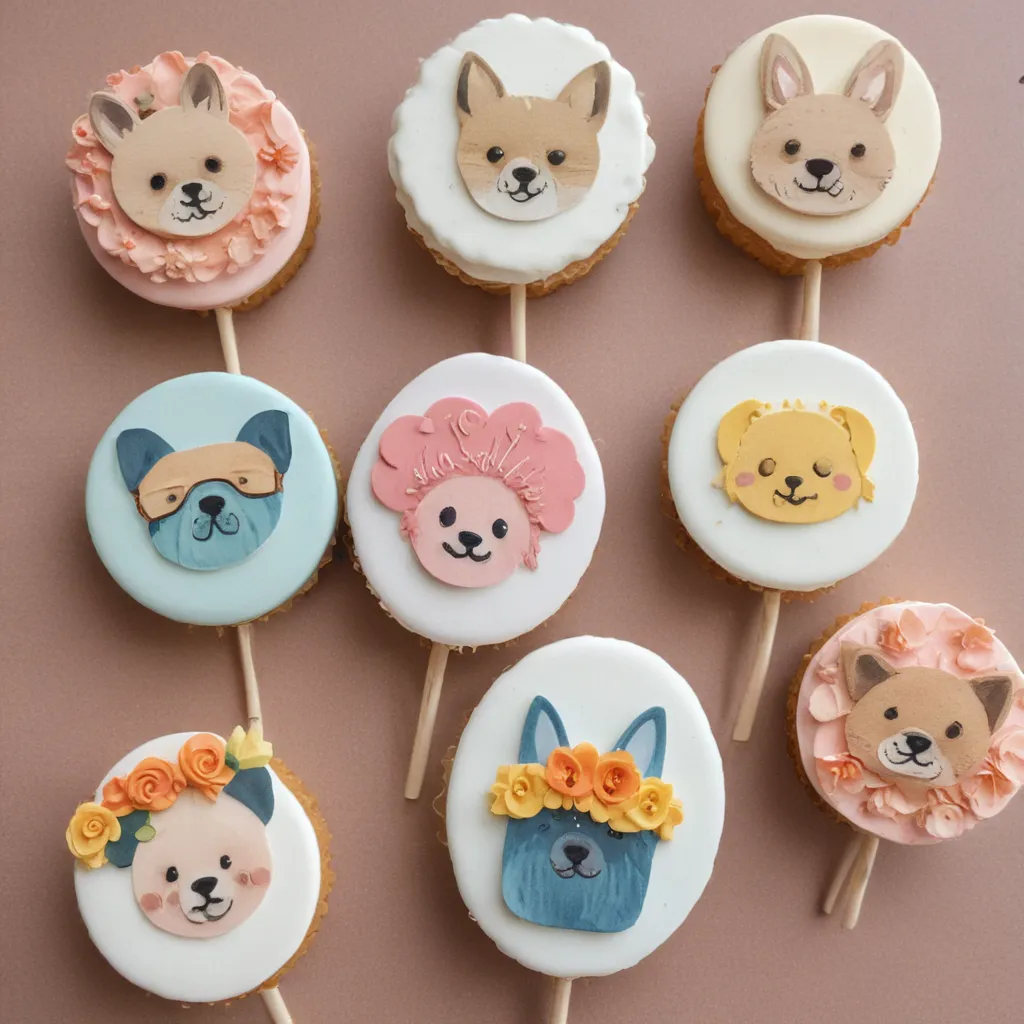The Sweet Science of Silky-Smooth Buttercream
Buckle up, buttercup, because we’re about to dive deep into the world of buttercream – that glorious, velvety frosting that can elevate a simple cake into a showstopping dessert. As the owner of Jax Cake Shop, I’ve had the pleasure of working with some of the most talented bakers and decorators in the industry, and let me tell you, they know a thing or two about whipping up the perfect buttercream.
Now, I know what you’re thinking – how hard can it be to make buttercream? Just throw some butter, sugar, and a dash of vanilla in a mixer, right? Well, my friends, there’s a little more to it than that. Buttercream is a science, a delicate balance of fats, sweeteners, and flavorings that can make or break your cake. But fear not, because I’m here to share the secrets of the pros, so you can become a buttercream master in your own right.
The Anatomy of Buttercream
Let’s start with the basics. Buttercream is, at its core, a simple mixture of butter, sugar, and sometimes other ingredients like milk or cream. But what separates the pros from the amateurs is the way they approach each of these elements.
First, let’s talk about the butter. You’d think that any old stick of butter would do, but the pros know that the quality and temperature of your butter can make all the difference. We use only the highest-quality, unsalted butter, and we make sure it’s at the perfect temperature before we start whipping. Too cold, and it’ll be lumpy and difficult to incorporate. Too warm, and it’ll turn into a greasy, separated mess.
Next, there’s the sugar. While granulated sugar is the most common choice, the pros often opt for powdered sugar, also known as confectioner’s sugar. The finer grind helps the sugar dissolve more easily, resulting in a silkier, smoother buttercream. But don’t just take my word for it – try it for yourself and see the difference!
And then there’s the liquid. While some recipes call for milk or cream, the pros often prefer to use a bit of water or even just the starch from the sugar itself. The goal is to create a buttercream that’s light and airy, not dense and heavy.
The Art of Whipping
Now that we’ve covered the basics, let’s talk about the real magic – the whipping. This is where the pros really shine, and it’s where the difference between a good buttercream and a great one becomes crystal clear.
The key to perfect buttercream is to whip it. And I mean really whip it – we’re talking about 10, 15, even 20 minutes of relentless whipping. Why, you ask? Well, the more air you can incorporate into the buttercream, the lighter and fluffier it will become. And trust me, there’s nothing quite like that silky-smooth, cloud-like texture.
But it’s not just about the whipping time – it’s also about the technique. The pros know that the way you hold the mixer, the angle of the bowl, and even the speed of the whisk can all impact the final result. It’s like a well-choreographed dance, and the best bakers make it look effortless.
And let’s not forget about the temperature. Just like with the butter, the temperature of the buttercream itself can make or break it. If it’s too warm, it’ll be loose and greasy. Too cold, and it’ll be stiff and difficult to work with. The pros know the perfect sweet spot, and they use a variety of tricks to keep their buttercream at the optimal temperature throughout the entire decorating process.
Flavor Profiles and Beyond
But buttercream isn’t just about texture – it’s also about flavor. And the pros know that the possibilities are endless when it comes to adding that extra zing to your cakes.
Sure, the classic vanilla buttercream is always a crowd-pleaser, but why stop there? The pros are constantly experimenting with new and exciting flavor combinations, from rich chocolate to tangy lemon to earthy coffee. And they’re not afraid to get a little creative, either – I’ve seen everything from lavender-infused buttercream to a surprising (and delicious) avocado-lime variety.
And it’s not just about the flavors, either. The pros also know how to use buttercream in creative ways to enhance the overall look and design of a cake. Whether it’s piping intricate patterns, sculpting delicate flowers, or creating a smooth, flawless finish, the possibilities are truly endless.
Troubleshooting and Tips from the Pros
Of course, even the best of us can run into the occasional buttercream hiccup. But the pros have a few tricks up their sleeves to help get things back on track.
One common issue is over-whipping, which can cause the buttercream to become grainy and curdled. The solution? Simply add a few tablespoons of room-temperature cream or milk and give it a good stir. This will help to smooth things out and restore that silky texture.
Another common problem is a greasy, separated buttercream. This can happen if the butter is too warm or if the ratio of fats to sugars is off. The pros know that the key is to chill the buttercream in the fridge for a bit, then re-whip it until it’s light and fluffy once again.
And let’s not forget about the all-important issue of storage. The pros know that buttercream can be finicky, and it’s important to store it properly to ensure it stays fresh and delicious. Always keep it refrigerated, and be sure to let it come up to room temperature before using it for decorating or filling.
A Final Word from the Pros
So there you have it, folks – the secrets of the buttercream pros, laid bare for all to see. But don’t be fooled – this is a skill that takes time and practice to master. It’s a delicate dance of temperatures, textures, and flavors, and the pros have spent years perfecting their craft.
But don’t let that intimidate you! With a little patience and a whole lot of curiosity, you too can become a buttercream virtuoso. So grab your mixer, preheat your oven, and get ready to whip up some of the silkiest, most delectable buttercream your taste buds have ever encountered.
And if you ever find yourself in San Jose, be sure to stop by Jax Cake Shop – we’re always happy to share a slice (or a whole cake!) and swap buttercream secrets with our fellow enthusiasts. Until then, happy baking, my friends!




